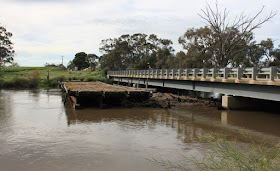A PROV “Soldier On” exhibition will be at Horsham Library from Monday October 17th until Friday 25th November, and then at St. Arnaud Library from Tuesday 29th November 7 until Friday 16th December.

Victoria sent about 90,000 men and women to serve overseas in the First World War, about 70,000 of whom survived to return home. As the war continued, the issue of repatriating returning soldiers became increasingly urgent. As well as providing War pensions and other financial assistance, State governments of the time set up ‘settlement’ schemes to support returning soldiers with work. These ambitious and controversial schemes involved subdividing large rural estates into smaller parcels of land for family farming blocks and leasing them back to discharged service-people. In Victoria around 11,000 farms were created. Each potential settler was required to be certified as qualified to apply, and if successful to remain in residence on that land for 5 years. In this way remote rural areas set aside for such settlement were guaranteed a population expansion for a number of years
 |
| Erecting a standard soldier settler home (SLV) |
The First World War Soldier Settlement Scheme had been administered by the Lands Department and culminated with the majority of farmers walking off the land and ultimately a Royal Commission. The Soldier Settlement Commission (later called The Rural Finance Commission) began in 1945 to oversee the WW2 Soldier Settlement Scheme.
 |
| Oliver Telfer's (ex-22nd Battalion Gallipoli veteran) first house, Lascelles, 1922 (Vic. Museum) |
The Public Record Office Victoria have digitised selected documents from Victorian Government files kept on returned World War One soldiers who were approved to lease a block of farming land in Victoria. These government records will help family and Australian history researchers understand the individual experience of a soldier settler, as well as the historical context of the Victorian Soldier Settlement Scheme.
An Exhibition Launch with a talk from the Exhibition Curator Kate Luciano of the Public Record Office Victoria, will take place at Horsham Library on Monday October 17th at 6.30pm. Bookings are essential via visiting the library or phoning 5382 5707.


.JPG)
.JPG)











